For the ducks, red eyes are considerable as a sign of their excellent health. However, some also say ducks with red eyes clearly express eye infections and other diseases.
However, some of the species have naturally red eyes. Here, in this article, you will get to know about 15 species of ducks with red eyes. All of them are beautiful and have distinct natures.
Rosy Billed Pochard, Cinnamon Teal, Wood, Canvasback, Red-crested Pochard, and other ten pieces have natural red eyes. All of them are popular for their fascinating and colorful appearance.
Some are found in pods, marshes, and swamps; others only prefer freshwater habitats. Stick with this article, and you will get to know more about each species.
15 Common Species of Ducks With Red Eyes
1. Rosy-Billed Pochard
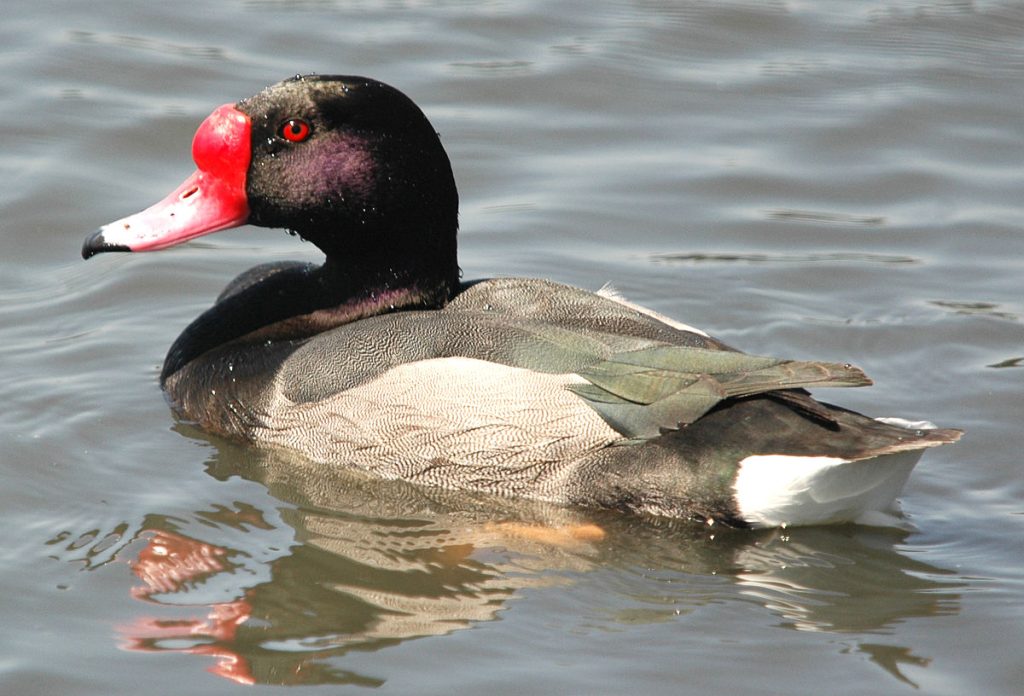
- Scientific Name: Netta peposaca
- Size: 13 inches
- Location: South America
Rosy Billed Pochards are found in Chile, Argentina, Bolivia, Brazil, Paraguay, Uruguay, and other nearest places in South America. They are comfortable places with tall grasses in wetlands. It has a distinctive rosy red bill and a gray body with a black back and tail.
The male has a chestnut-colored head and neck, while the female has a light brown head and neck. They are medium-sized ducks with a length of about 43 cm (17 inches).
These Rosy Billed Pochards live on knotgrass and barnyard grasses, roots, sedges, and other aquatic plants. Their diet usually requires carbohydrate-based foods. These ducks are not monogamous and pair around September and November.
After hatching, both parents take care of the ducklings until they are able to fly, which usually takes about 65-75 days.
2. Cinnamon Teal
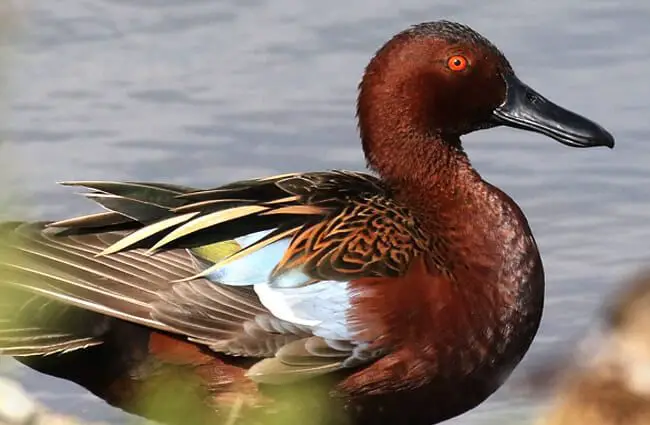
- Scientific Name: Spatula cyanoptera
- Size: 16 inches
- Location: North and South America
Cinnamon Teal Ducks belong to the Ducks and Geese family. They live around marshes, fresh ponds, alkaline, and shallow lakes. These ducks prefer eating seeds, sedges, grasses, insects, snails, and pornweeds.
The Cinnamon Teal is a migratory species, with populations found from western Canada to central Argentina. They breed in the northern parts of their range and migrate south for the winter. They also undertake altitudinal migrations in some regions.
During the breeding season, the male Cinnamon Teal performs elaborate courtship displays to attract a mate. These ducks inhabit freshwater ponds, marshes, and shallow wetlands. They are often found in pairs or small groups.
3. Gray Teal

- Scientific Name: Anas gracilis
- Size: 13 to 15 inches
- Location: North America, Europe, and Asia
Gray Teal Ducks are one of the most gorgeous-looking, unique species of them. This is not only beautiful but also impactful on the ecosystem. Seeing them swimming in water will attract your eyes through their colorful appearance.
Comparatively, they are smaller in size than other red-eyed ducks. The Grey Teal is known for its ability to survive in a wide range of wetland habitats, including lakes, swamps, and even urban ponds. It feeds on a diet of aquatic plants, seeds, and insects.
During the breeding season, the male Grey Teal develops bright green glossy feathers on its head and upper body, while the female has a more subdued plumage. Overall, the Grey Teal is a versatile and adaptable duck species that is commonly spotted across its range.
4. Chestnut Teal
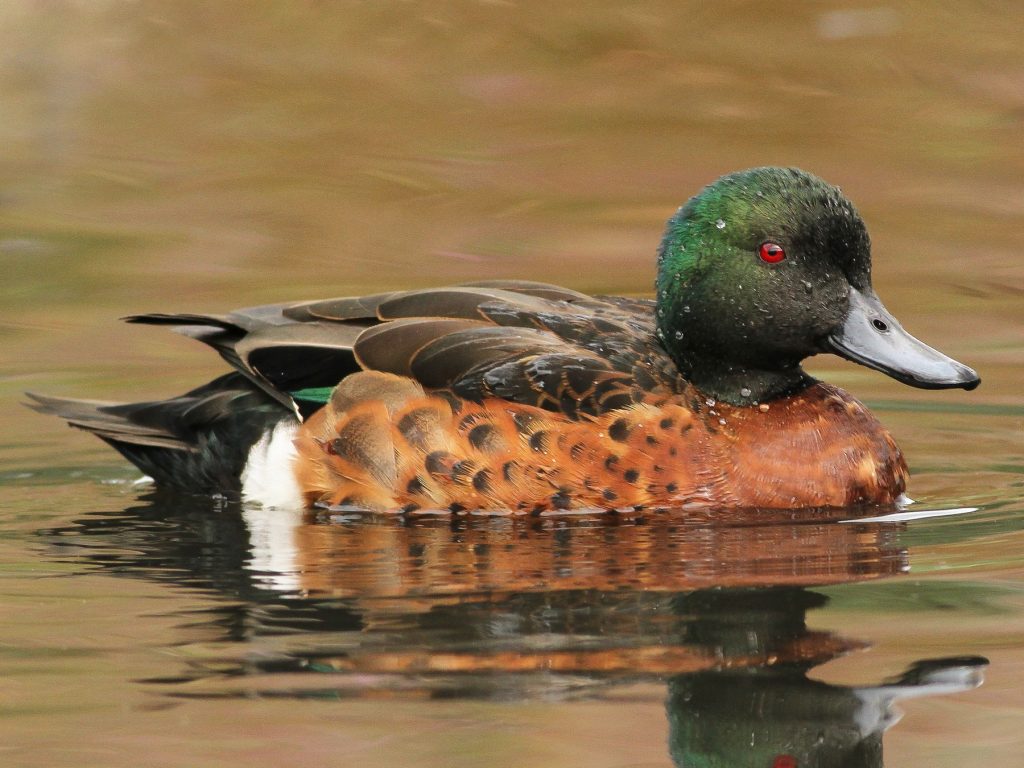
- Scientific Name: Anas castanea
- Size: 50 inches
- Location: Australia
Chestnut Teals are found popularly around the southern and southeastern parts of Australia. This is known in Victoria, Tasmania, and the South Wales part. A unique thing to know about these ducks is that they can indeed survive on sanitary water.
However, these require fresh water for drinking. Chestnut teals inhabit a variety of wetland habitats, including swamps, lakes, rivers, and estuaries. They are highly adaptive and can be found in both freshwater and saltwater environments.
They mainly feed on aquatic vegetation, insects, crustaceans, and small mollusks. During the breeding season, chestnut teals form monogamous pairs.
5. Sunda Teal
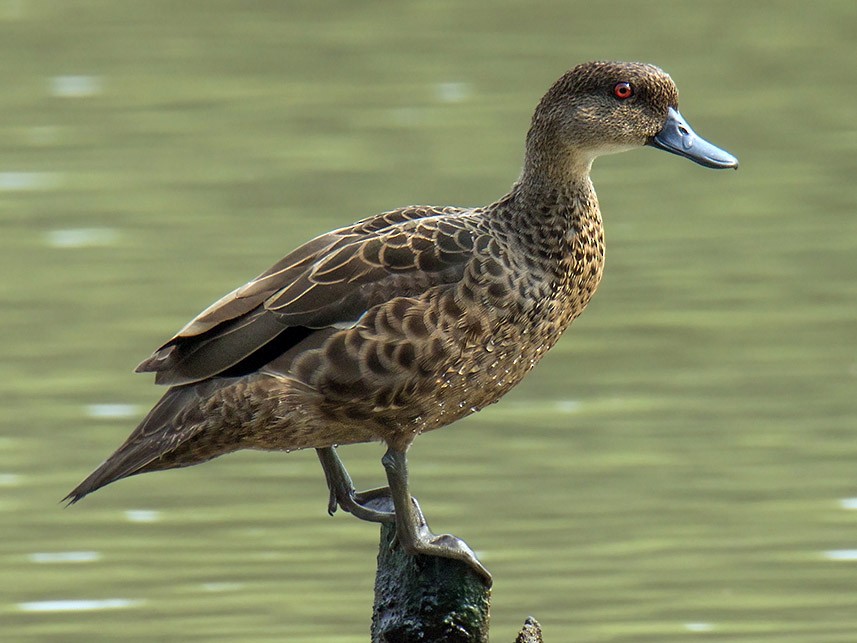
- Scientific Name: Anas gibberifrons
- Size: 33 to 38 cm
- Location: Southeast Asia
This is a species of small dabbling duck found in Southeast Asia. It is primarily found in the Sundaland region ( Indonesia, Malaysia, and Brunei). The Sunda Teal prefers wooded wetlands, marshes, and shallow lakes.
They have a brown, black, and white combination on their bodies. Their red eyes are covered with white eyebrows. Sunda Teals feed on aquatic plants, seeds, and invertebrates. They are skilled divers and can use their bills to reach submerged food.
During the breeding season, the male performs courtship displays to attract a mate. The female typically lays around 6-8 eggs and incubates them for about a month.
These Sunda Teal ducks might not differ by look. However, they provide different quacking sounds. The female ones do loud quacking, and the male ones do soft peeping sounds.
6. White-winged Duck
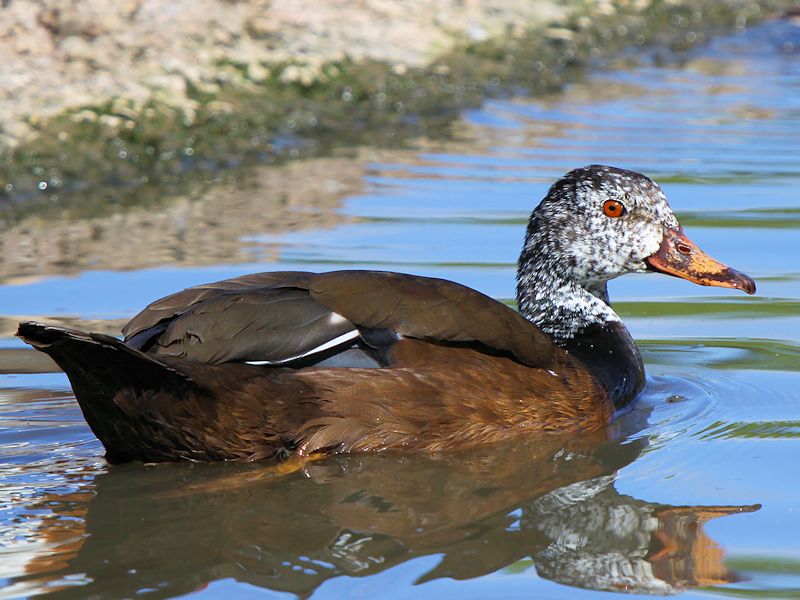
- Scientific Name: Asarcornis scutulata
- Size: 66–81 cm
- Location: Southeast Asia
The White-winged Duck is a large species of duck found in Southeast Asia. It is known for its distinctive appearance, with a black body and white wings. These are one of the most giant duck species by size.
They have pretty captivating black bodies and white-thick spots all over them. Male ones are generally heavier and more significant, with larger feathers.
Also, the female ones might be slightly lightweight. Unfortunately, this species is classified as endangered due to habitat loss, hunting, and pollution.
7. Wood Duck
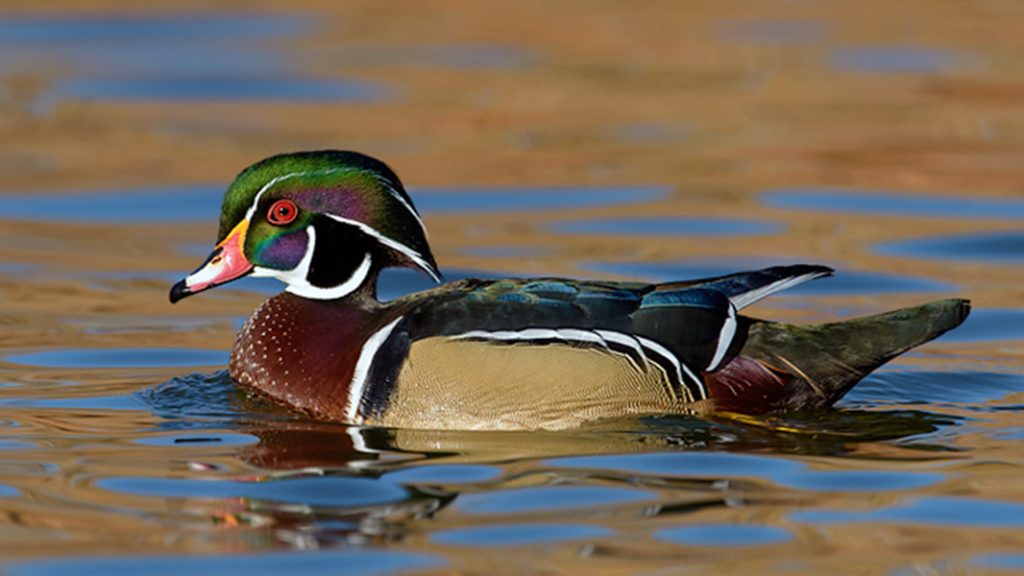
- Scientific Name: Aix sponsa
- Size: 18.5 in
- Location: North America
Wood ducks are seemingly attractive species in North America. However, they have been the victim of over hunting around the USA and Canada. These are some of the most renowned yet rare ducks there.
According to the reports, now the USA has only 3 to 4 million wood ducks available. By their name, they nest around woodlands. However, wood ducks are highly adaptable and can be found in a variety of wetland habitats, including lakes, ponds, rivers, and marshes.
8. Canvasback
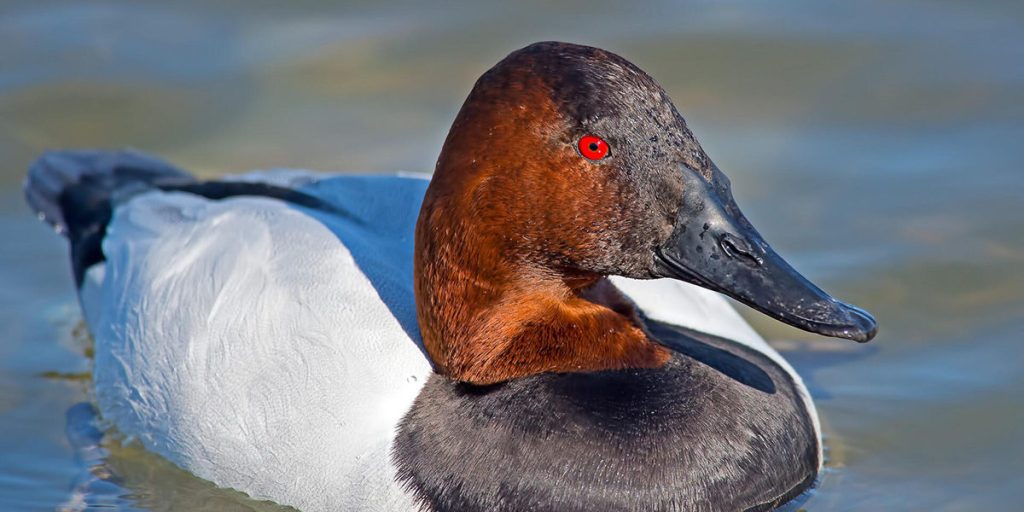
- Scientific Name: Aythya valisineria
- Size: 79-89 inch
- Location: North America
Canvasback ducks are highly popular around the North American coast (Canada, USA, Mexico)). They are migrating birds who fly to the south during winter and get back to the Texas coast during November.
They nest around lakes, marshes, bays, freshwater, wetlands, rivers, and estuaries. However, the habitat will vary from season to season. These ducks prefer spending most of their time on water.
They can also sleep for one hour. These are peaceful and silent types of ducks. However, during courtship, these are seen to make alarming noises.
9. Red-crested Pochard
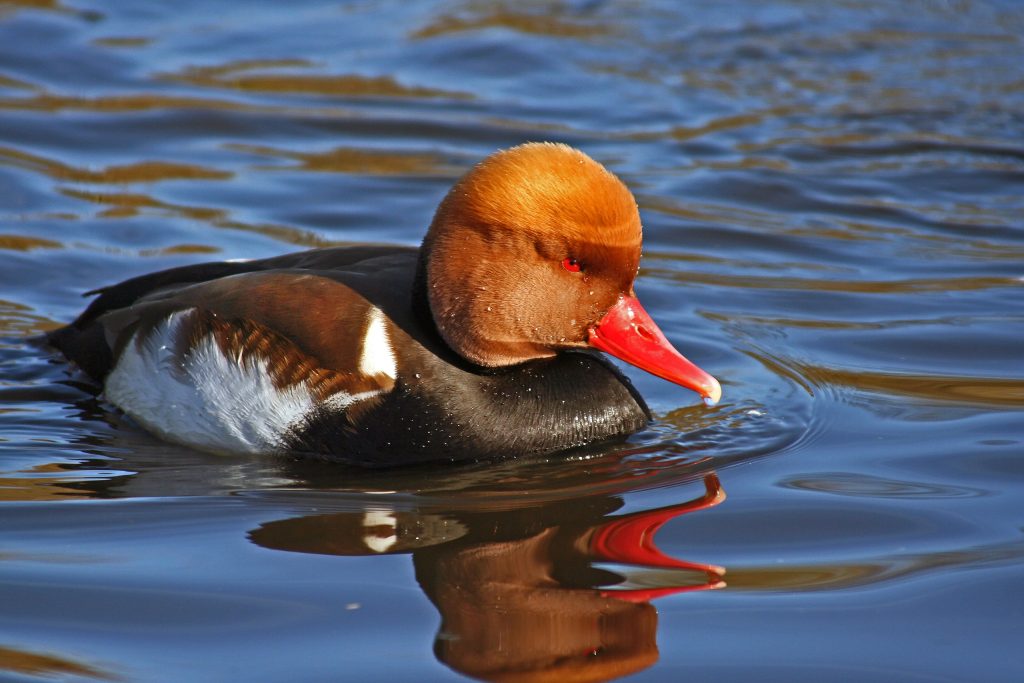
- Scientific Name: Netta rufina
- Size: 50 to 60 cm
- Location: Southern Europe
Red Crested Pochards’ scientific name is Netta Rufinba, and it is derived from the Greek word Netta (duck) and the Latin word Rufus (golden red). But their name, you already know how beautiful this species is.
These are monogamous birds that mate every 45 to 50 days. These ducks are distinguishable by their looks. Male Red-crested pochards have rich chestnut heads along with black bodies, brown backs, and white sides.
At the same time, the female ones have pale brown bodies, ruch brown caps, and whitish cheeks. Like other ducks, they can also be fed on aquatic plants, seeds, fish, snails, and carbs.
10. Muscovy Duck
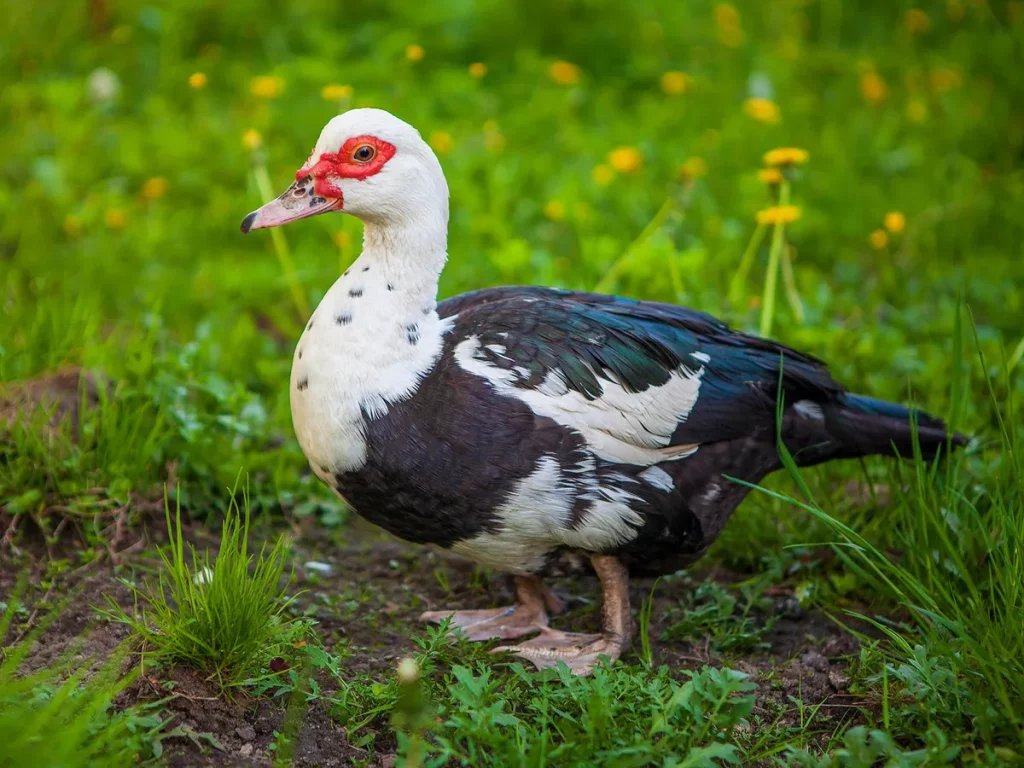
- Scientific Name: Cairina moschata
- Size: 74 to 90 inch
- Location: Southern Europe
Muscovy ducks have been domesticated around Peru and Colombia for 4000 years. And wild ones are mostly found around American tropicals. These are migrating ducks that fly from Northeastern Mexico to Southeastern Texas.
Both male and female MUscovy ducks are black and white in color. However, male ones shave glossier feathers compared to female ones. You can quickly identify them by white spots around their neck.
11. Red-Breasted Merganser
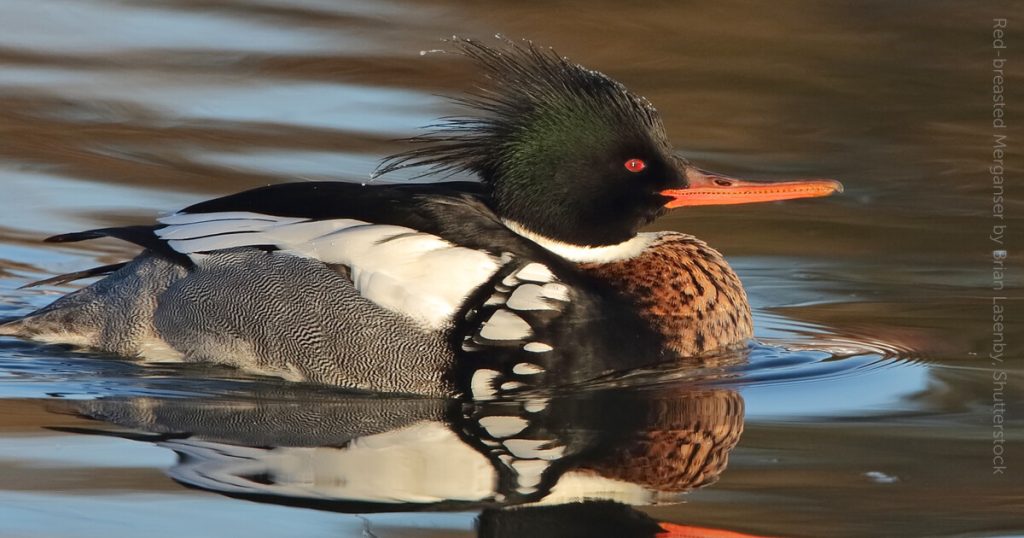
- Scientific Name: Mergus serrator
- Size: 74 to 90 inch
- Location: Northern Hemisphere
Red Breasted Mergansers belong to the Duck and Geese family. They seem to live on lakes, open water, rivers, and coastal bays. These are renowned as fish-eating ducks. These live around Lake and open water during winter and coastal bays.
And during the nesting season, they live around the northern forest. These are pretty large in size, with long necks and thin bodies. They have shaggy chest feathers. They swim by keeping their head partially submerged.
12. White-Winged Duck

- Scientific Name: Asarcornis scutulata
- Size: 66 to 81 cm
- Location: Northeastern India and Bangladesh
White-winged ducks are a common species in Northeast India, Southeast Asia, and Myanmar. However, there are only about 450 birds alive. These ducks have black bodies, white heads,s and tiny conspicuous spots all over their body.
Male and female white-winged ducks are not distinguishable. However, male ones have glossier feathers than male ones. This bird feeds on aquatic plants, seeds, frogs, snakes, and fishes.
13. Crested Duck
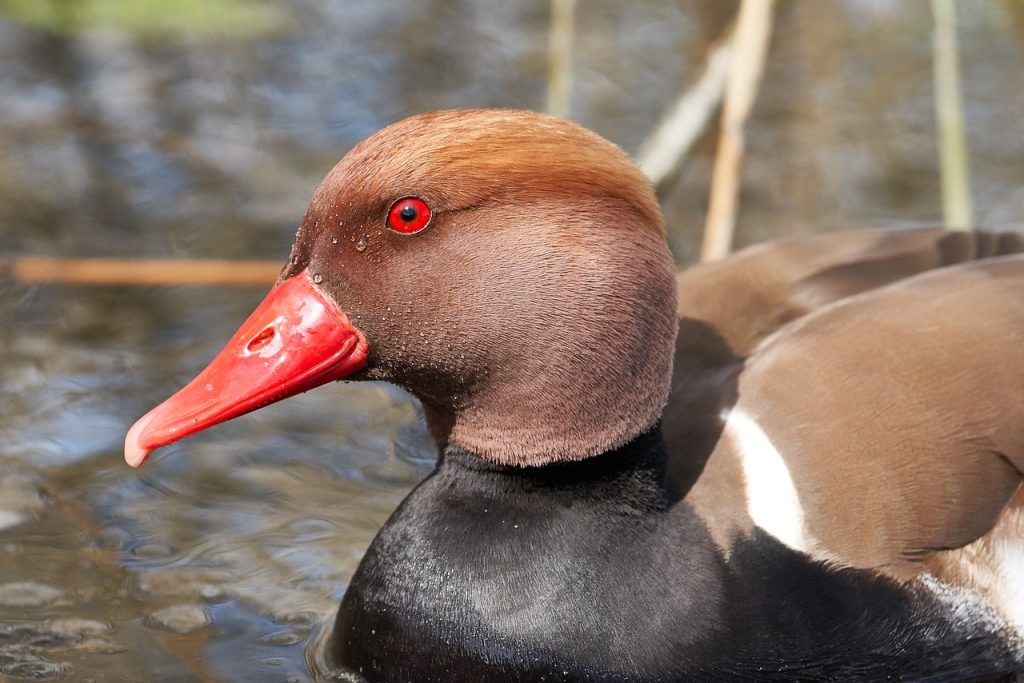
- Scientific Name: Asarcornis scutulata
- Size: 66 to 81 cm
- Location: Northeastern India and Bangladesh
Crested Ducks are scientifically known as Lophonetta specularities. These are some of the most domesticated animals. Crested ducks are more friendly in nature. Also, they are used as meat ducks because of their deep breasts. These ducks are white and black in color.
Many consumers crested ducks as aggressive birds. Well, that is not true at all. Instead, these birds are fragile and get frightened easily. So, these will make a good pet or efficient in farming.
14. Cape Teal
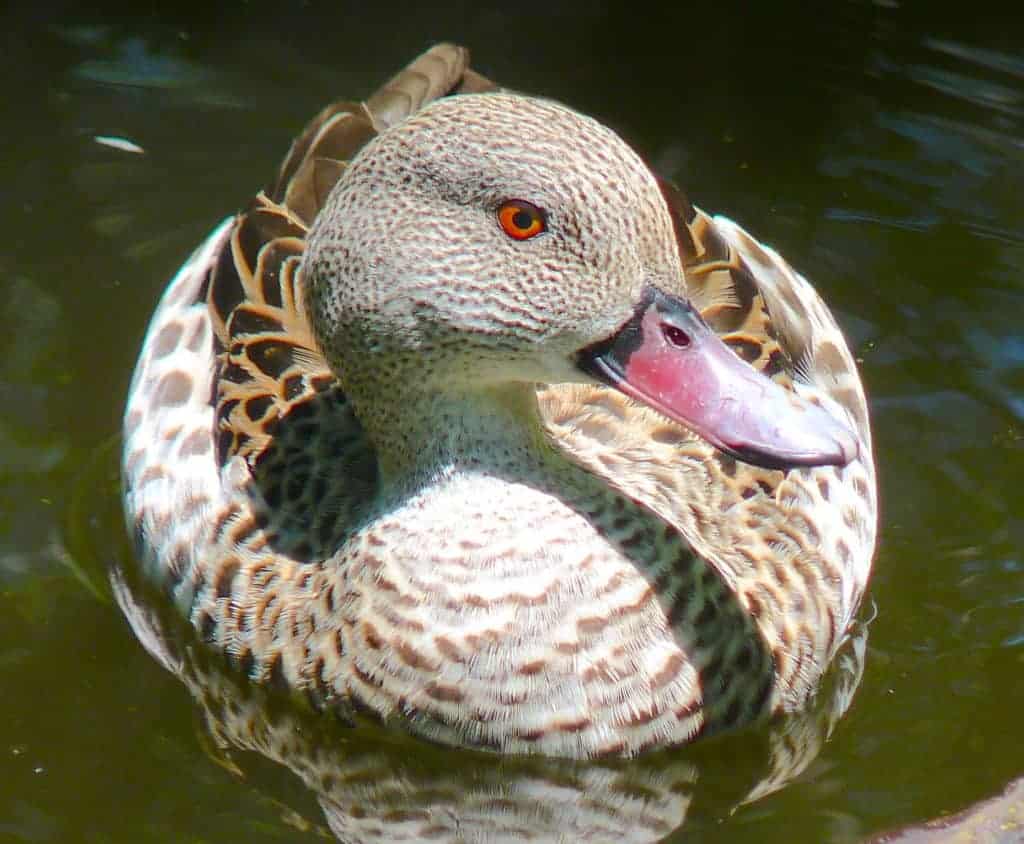
- Scientific Name: Anas capensis
- Size: 44 to 46 cm
- Location: Sub-Saharan Africa
Cape Teas are sub-Saharan African non-migrating ducks. However, these rarely move during the rainy season from one place to another. These are generally pale, gray, and pink in color, with primarily brown and black tones.
Cape teal ducks are generally fed on aquatic plants and insects. These are found in a group of 3 to 7 ducks. Unlike most ducks on the list, these are very large in population. These cape teals get sexual maturity in 1 to 2 years.
15. Common Pochard
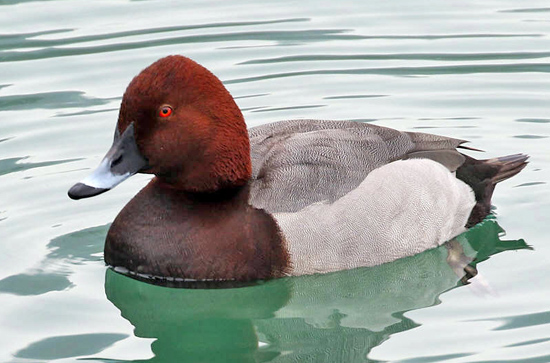
- Scientific Name: Aythya ferina
- Size: 42 to 49 cm
- Location: UK
Common Pochards are medium-sized ducks of Western Europe. Pochards are big-headed and round-headed ducks. During winter, these pochards migrate to Egypt, Southern China, and India.
You can easily identify them through the puffy yellowish-red head and crown feathers. They have black throats and breasts, along with white heads. Adult pochards have rusty heads, black breasts, and gray plumage. At the same time, female ones are mostly brown in color.
Wrap-up
Red-eyed ducks are usually one of the most beautiful creatures in the water. People mostly mistake this physical feature for an allergy reaction. The truth is these red eyes are their physical features like crown, bill, nail, and throat. However, in some cases, red eyes are also the result of illness. If your ducks do not belong to the list, you better consult a vet for prescriptions.
Dr. Patrick Simon, DVM, is a qualified veterinarian specializing in exotic animals, especially reptiles. He has a master’s degree in zoology and a doctorate in veterinary medicine from the University of California, Davis. He has worked with various reptile owners and rescues for over ten years, providing expert care and advice. He is passionate about educating people about the fascinating world of reptiles and their unique needs.


